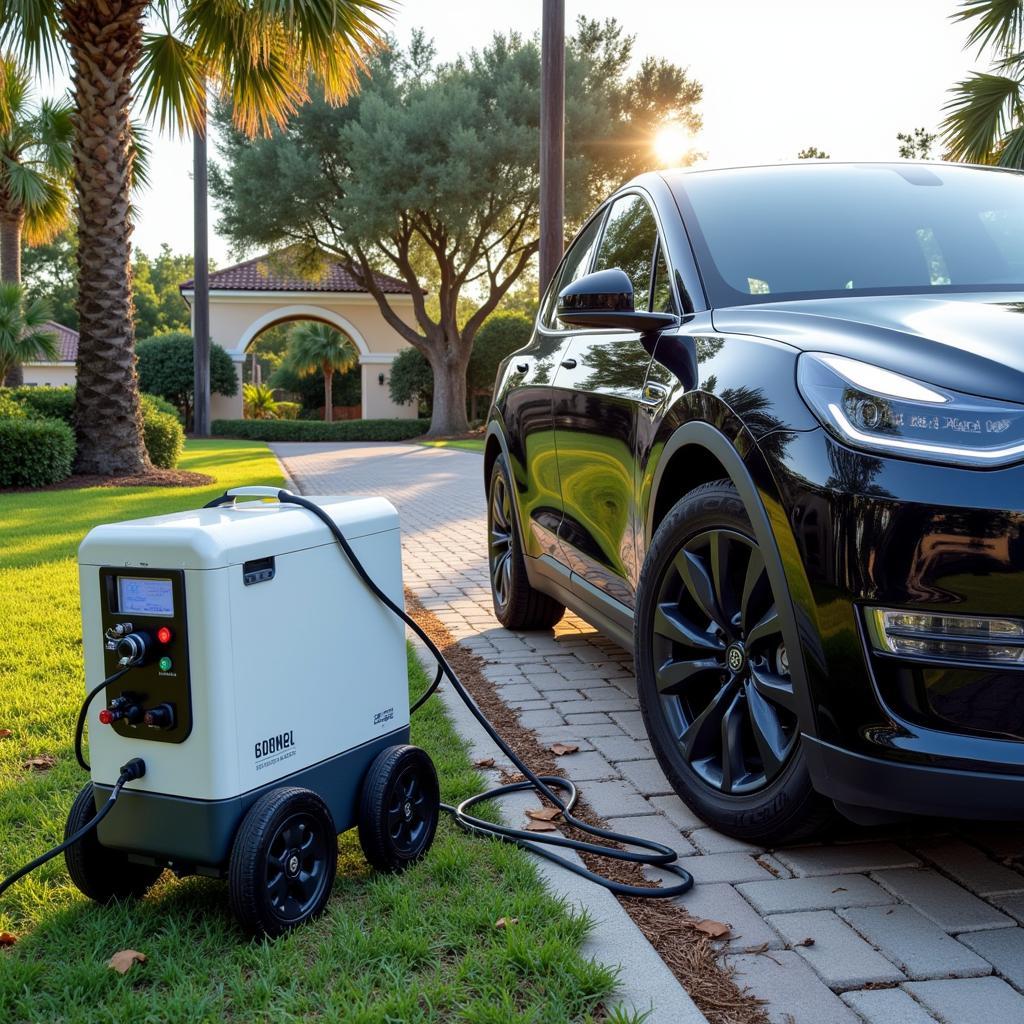Hail damage can be a nightmare for car owners. From minor dings to significant dents, hail can wreak havoc on your vehicle’s appearance and potentially even compromise its structural integrity. This guide will provide you with a comprehensive understanding of how to assess and address hail damage, offering solutions for DIY repairs and professional interventions.
Assessing the extent of the damage is the first crucial step. Carefully examine your car’s exterior, including the hood, roof, trunk, and sides. Note the size and depth of the dents. Smaller, shallower dents might be amenable to DIY repair methods, while larger, deeper dents often require professional attention. Don’t forget to document the damage with photographs for insurance purposes. How much does it cost to fix deep car scratches? You might be surprised. Find out more here: how much does it cost to fix deep car scratches.
DIY Hail Damage Repair: Paintless Dent Repair (PDR)
For minor hail damage, Paintless Dent Repair (PDR) can be a cost-effective solution. PDR involves using specialized tools to gently massage the dents out from the underside of the panel. This method preserves the original paint job, avoiding the need for fillers and repainting. However, PDR requires skill and patience, and it’s not suitable for all types of hail damage. Deep dents or dents with paint damage will likely require traditional bodywork. If you’re unsure about tackling deeper scratches yourself, check out our guide: cost to fix deep scratches on car.
When Should You Call a Professional for Hail Damaged Cars?
While DIY repairs can be effective for minor dings, significant hail damage requires professional intervention. If the dents are large, deep, or accompanied by paint damage, it’s best to consult a reputable auto body shop. Professionals have the expertise and equipment to restore your car to its pre-hail condition. They can also handle insurance claims and ensure a seamless repair process.
Professional Hail Damage Repair: What to Expect
Professional hail damage repair typically involves a multi-step process. The technicians will first assess the damage and provide an estimate. They may then use PDR for smaller dents or traditional bodywork for more extensive damage. Traditional bodywork involves filling the dents, sanding, priming, and repainting the affected areas. A clear coat is then applied for protection and shine. Cracked leather can be an eyesore too. Learn how to revitalize it: how to fix cracked car leather.
“When dealing with extensive hail damage, professional repair is the way to go,” says John Smith, Automotive Repair Specialist at Smith Auto Body. “Attempting DIY repairs on severe damage can often exacerbate the problem and lead to higher costs down the line.” Another expert, Jane Doe, Lead Technician at Doe Auto Repair, adds, “A professional repair not only restores the appearance of your car but also ensures its structural integrity and safety.” Wondering about DIY scratch repair? Find out what’s possible: can you fix car paint scratches. Looking for the most effective way to tackle those deep scratches? Explore the options: best way to fix a deep scratch on car.
Preventing Hail Damage: Protecting Your Car
While you can’t always avoid hailstorms, taking preventive measures can minimize the potential damage to your car. Parking in a covered garage or carport is the best way to protect your vehicle. If covered parking isn’t available, consider using a car cover or even placing blankets or cardboard over vulnerable areas like the hood and roof during a hailstorm.
In conclusion, understanding How To Fix Hail Damaged Cars requires a thorough assessment of the damage and choosing the appropriate repair method. DIY solutions like PDR can be effective for minor dents, while professional intervention is necessary for more extensive damage. By taking proactive steps, you can effectively address hail damage and restore your car to its former glory. Need assistance with your automotive concerns? Connect with us at AutoTipPro. Our phone number is +1 (641) 206-8880, and our office is located at 500 N St Mary’s St, San Antonio, TX 78205, United States.





Leave a Reply